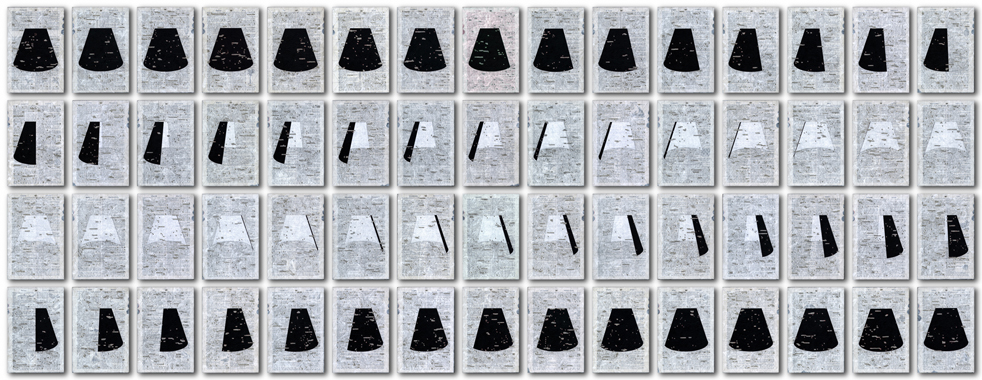
| D: 253-312 : The central image is the skin of a truncated, vertically bisected cone. The form rotates from panel to panel through sixty positions, revealing and hiding the white interior and the black exterior. Based on a symbology relating the embodied man to a truncated cone, constantly striving upward under separate influences of body and spirit represented respectively by the black and the white sections. [ A complete upward cone would represent a fully realized man on earth, a Buddha or avatar; the downward cone symbolizes the action of the higher in this world, the descent of the Holy Spirit. ] The bisection is there for the intrinsic feeling of half-ness that man feels in this world; the rotaton references the phases of the moon. The structural framework forms a stupa diagram with the elements represented by their geometric forms; Earth: the square base (in perspective), Water: the circle-oval bottom of the cone, Fire: the truncated cone, Air: the semicircle where the cone is cut off, Ether: the center of that circle. A stupa symbolizes the mind of Buddha; in this piece: the inner or outer buddha-nature of man. | |||
 |
|||